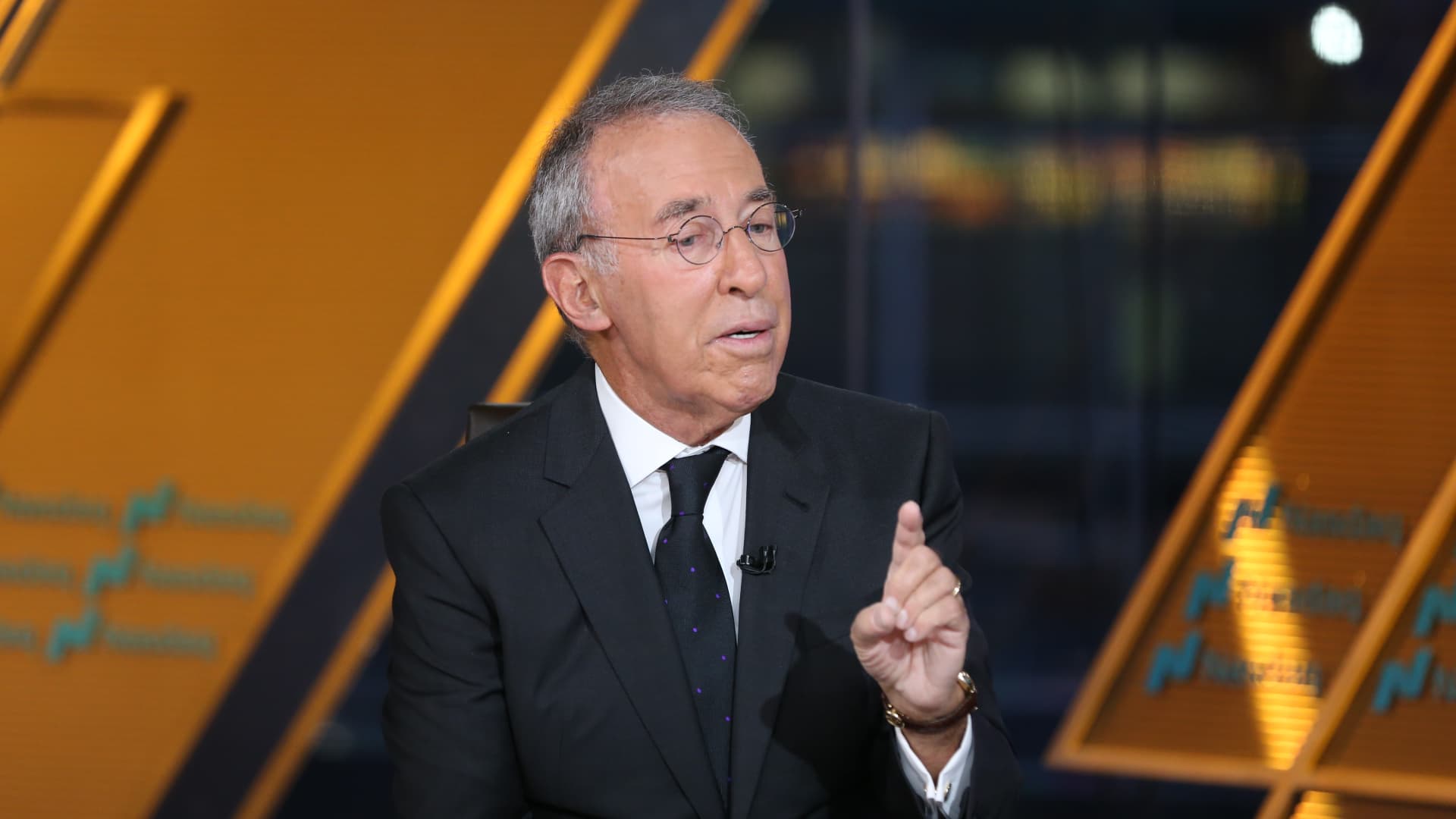Dow futures tumble 600 points as Trump threatens new tariffs against the EU and Apple: Live updates

Traders work on the floor of the New York Stock Exchange on March 13, 2025.
NYSE
Stock futures declined early Friday after President Donald Trump ramped up his trade fight again, slapping a tariff on Apple for foreign-made iPhones and recommending new stiffer duties on the European Union.
Futures tied to the Dow Jones Industrial Average dropped by 601 points, or 1.4%. Nasdaq 100 futures lost 1.8%, and S&P 500 futures fell 1.5%.
Apple shares shed 3% in premarket trading after Trump posted on Truth Social that iPhones sold in the U.S. must be made in the U.S. and if they are not “a tariff of at least 25% must be paid by Apple.” The move against Apple by Trump is the first against a specific company in his tariff rollout this year.
Separately, the president said trade discussions with the EU “are going nowhere” and so he’s “recommending a straight 50% tariff on the European Union, starting on June 1, 2025.”
Trump’s actions come at a time when tariff tensions were easing. Trump in April implemented duties on most nations in the world, which rattled the stock market and nearly put the S&P 500 in a bear market. The president then paused the stiffest tariffs for 90 days and hatched some preliminary agreements with the U.K. and China, causing stocks to recover. The S&P 500 got back to even on the year last week.
Investors were buying stocks on speculation that more agreements would be rolling out with various nations during this three-month pause period. Friday’s actions by Trump could mean that hope was misplaced.
Before Friday’s losses, the major averages were already in the red this week with surging bond yields worrying investors. The S&P 500 is down nearly 2% through Thursday’s close. The Dow is on pace for a decline of about 1.9%, while the Nasdaq is tracking for a 1.5% slide week to date.
Early Thursday, members of the House of Representatives cleared President Donald Trump’s sweeping tax bill. It now goes to the Senate. Worries about the cost of the measure — and its effect on the nation’s debt and deficit — sent long-term Treasury yields higher.
The 30-year Treasury bond yield touched a high of 5.161% this week, its highest level since October 2023. The rate on the 10-year Treasury note at one point breached 4.6%. Both yields fell slightly on Friday.
The revived fears over the economy follow Moody’s downgrade of the U.S.’ credit rating nearly a week ago. The rating agency cut the nation’s sovereign credit rating down one notch to Aa1 from Aaa, pointing to the government’s ballooning deficit and the cost of rolling over its existing debt.
Yields are rising partly because of Trump’s trade war, with fears that inflation could be revived from the new taxes on imports.









